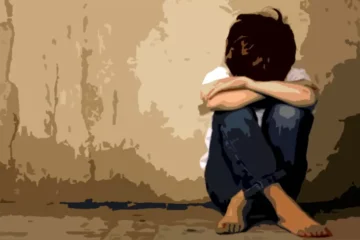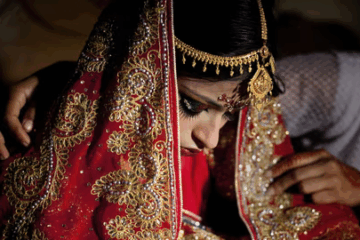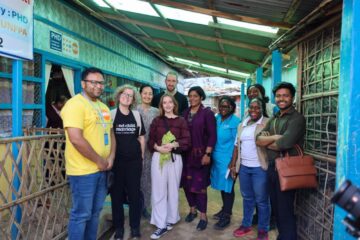According to UNICEF, about 38 million women and girls are married before the age of 18, of which 15.5%, or 13 million, are married before the age of 15. Of this number, a staggering 24% girls give birth. This alarming statistic ultimately places Bangladesh at 8th place in the world in terms of child marriage prevalence, which, according to UNICEF estimates, is the highest in Asia.
Child marriage is considered a shameful social dilemma these days. There are many factors that contribute to the prevalence of this problem, and most of these factors can be eliminated through widespread publicity, public awareness, and social welfare initiatives.
According to UNICEF's regional child marriage report published in 2020, it has been proven that the primary reasons behind child marriage are the residents of rural Bangladesh who live miserable lives due to extreme poverty. Therefore, poverty can be cited as one of the main reasons for the child marriage crisis.
Also, rural parents still consider daughter-in-law as a burden on their shoulders and due to these stereotypes and superstitions, most rural parents are forced to marry their daughters at a young age. Another worrying fact closely related to the antecedents of child marriage is that most girl children rarely receive primary education. Lack of education and knowledge are also factors in child marriage. If young girls knew their rights, they would have the voice and knowledge to stay away from this social stigma. According to a 2020 UNICEF report, more girls have gained the right to refuse child marriage as a result of acquiring education in rural districts.
Moreover, it is clear that child brides face numerous human rights problems. According to UNICEF reports, child brides are more likely to be victims of domestic violence. In addition, child brides are more likely to drop out of school soon after marriage, which violates the right of child brides to education. Therefore, the human rights situation for child brides is continuously deteriorating.
Since child marriage involves children, child rights and more specifically, human rights, the overall improvement of child marriage has become a primary agenda of various international organizations. Moreover, many internationally recognized instruments have been developed to give due recognition to the rights of children, especially to reduce child marriage. Bangladesh is a signatory state to many such treaties and conventions.
One such international instrument is the United Nations Convention on Consent to Marriage, Minimum Age for Marriage and Registration of Marriages. According to this Convention, member states must ensure that the minimum age for marriage is implemented and that the consent of the parties is a prerequisite for marriage. Bangladesh has also ratified important human rights instruments related to the protection of children's rights in a broader context.
Bangladesh ratified one of the fundamental human rights conventions known as the Convention on the Elimination of All Forms of Discrimination against Women (CEDAW) in 1985. This convention clearly states that child marriage has no legal consequences (Article 16, paragraph 2).
The African Charter on the Rights and Welfare of the Child, 1999, Article 2, states that a strong legal framework and other necessary measures must be adopted to protect the rights of girls and boys to be engaged. The 1989 Convention on the Rights of the Child (CRC) implicitly addresses the elimination of degrading practices that are harmful to the health of children. And when it comes to identifying degrading practices, this includes the culture of child marriage.
In order to limit the scope of measures to mitigate forced and early marriage of children, the report of the Office of the United Nations High Commissioner for Human Rights to the 26th session of the Human Rights Council, released on April 2, 2014, highlights several ways to break the vicious cycle of child marriage.
First, there are civil and criminal remedies against forced child marriage. For example, the UK has enacted the “Forced Marriage (Civil Protection) Act 2007”. This Act provides specific remedies to suppress the forced marriage of young children, including the provision of support to victims of child marriage through the use of Forced Marriage Protection Orders (FMPOs). Such orders can be issued by the victim or a third party acting on their behalf. The purpose of these orders is to bring victims of forced marriage into protective custody. In addition, the UK Parliament is considering the criminalisation of perpetrators of forced child marriage.
Similarly, the Australian Parliament has passed the Slavery Act 2013 to reduce the adverse impact of forced child marriage, which sets out a legal framework for the suppression of child marriage in line with international law. Australia considers child marriage to be a serious form of exploitation and a serious crime, and provides for a maximum penalty of four to seven years' imprisonment for such offences.
Considering the legal practice applicable in Indian jurisdictions, the approach appears to be similar. India has enacted the “Child Marriage Prohibition Act, 2006”. This Act is particularly unique for several reasons. For example, as per Section 3(1) of the Act, any case of child marriage shall be voidable or, in some cases, completely voidable at the will of the contracting parties. Here, voidable means that such marriage has no legal consequences.
Moreover, another notable feature of the Act is the inclusion and creation of government employees known as “Child Marriage Prevention Officers” who will monitor regional cases related to incidents of forced child marriage. In addition, the Act included remedial measures through the district courts and enforcement of injunctive relief for child victims. The Act also provides for a penal provision of two to four years for any adult male who marries a minor girl.
Now, narrowing our focus on our legal system, our government has enacted the “Child Marriage Prohibition Act (CMRA) 2017”. As per Section 2(3) of the Act, there is a prescribed minimum age for marriage between a man and a woman, which is 21 for men and 18 for women. The Child Marriage Prohibition Rules 2018 mandate the formation of a Child Marriage Prohibition Committee.
Sections 7, 8 and 9 of the Act provide specific penal provisions for child marriage, but despite the inclusion of a penal code, the Act does not have any strong provisions for declaring marriages valid. Unlike in India, the CMRA does not provide for the appointment of a Child Marriage Prevention Officer and the offences under the Act are bailable, which further increases the incidence of child marriage.
The most controversial provision of the CMRA that challenges the validity of the Act is the insertion of Section 19 as a special provision. This section states that, based on special circumstances, marriage between minors will be declared valid if such marriage is confirmed by their parents and if it is in their best interest. Therefore, this questionable provision of the CMRA itself challenges the overall validity of the Act.
In conclusion, we can assume that, despite the risks, Bangladesh is making efforts to mitigate child marriage. Adoption of the National Action Plan (NAP) to End Child Marriage (2018-2030). The NAP sets out specific prevention measures, including mechanisms for influencing, supporting and coordinating among policymakers, NGOs and ordinary citizens, whose combined community-based initiatives, the formulation of a robust legal framework and the amendment and updating of the current law, i.e. the CMRA, will significantly reduce the harmful effects of child marriage and help Bangladesh achieve its Sustainable Development Goals (SDG) commitments.



